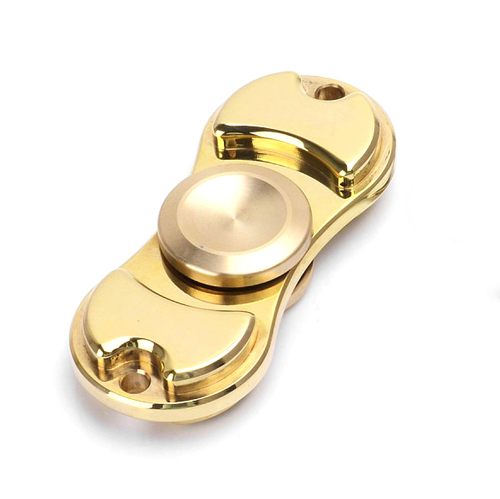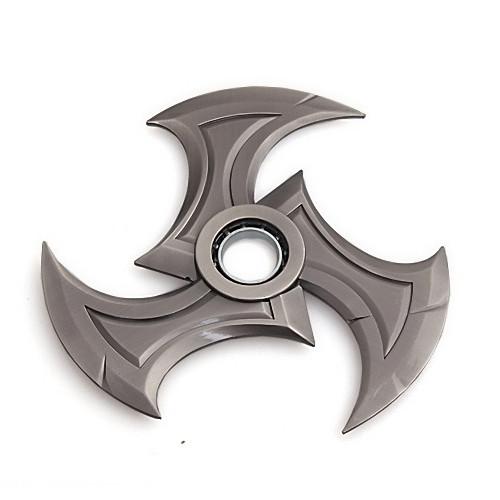Have You Heard Of Fidget Spinners? What They Are, How They Work & Why the Controversy?
This season’s hottest toy is marketed as an antidote for attention deficit hyperactivity disorder, anxiety and autism — but it’s also being banned in classrooms across the modern world.
“Fidget spinners” are small, ball-bearing devices that the user can rotate between his or her fingers. The momentum of the toy provides a pleasing sensory experience, according to user reviews, while the challenge of tossing, transferring and twirling the spinners has spawned an entire universe of instructional YouTube videos.
Many spinners are marketed as aides for individuals with anxiety, autism and ADHD; Cppslee’s spinner marketing patter on Amazon, for example, promises greater concentration for people with those conditions, plus an opportunity to “bring out that creative genius lying deep within you.”
Unsurprisingly, scientists say that these claims are probably overblown.
“Using a spinner-like gadget is more likely to serve as a distraction than a benefit for individuals with ADHD,” said Mark Rapport, a clinical psychologist at the University of Central Florida who has studied the benefits of movement on attention in people with ADHD.
Fidget spinners emerged this spring, seemingly from out of nowhere, as a must-have gadget. Before December 2016, Google searches for the words “fidget spinner” were basically nonexistent. Now, teachers are posting about their frustrations with spinner-obsessed students on Twitter, and the toys even have their own forum on Reddit.
Most of the controversy surrounding fidget spinners has been over schools banning them from classrooms. An elementary school principal in Evanston, Illinois, Kate Ellison, told the Chicago Tribune that the spinners have been a distraction in classrooms in her school, and that children with special needs have other, school-friendly options for fidgeting. Meanwhile, some parents of kids with special needs have hailed the toys’ benefits. One blogger, a parent of an 8-year-old with autism, wrote on AutismAwareness.com that her daughter was thrilled to see her classmates wanting to fidget just like her. School-approved fidget devices mark her daughter as different, wrote Miriam Gwynne, but fidget spinners are simply cool.
“For her, the fidget spinner is not a must-have craze to be like her friends, but more a stress release from the demands placed upon her during her school day — much the same as she uses a stress ball or her twist-and-lock blocks,” Gwynne wrote. “When schools decide to ban sensory and fidget toys, they risk isolating the very children they’ve spent years trying to include.”
The list of schools banning the spinners seems to be growing and now includes schools in Massachusetts, Brooklyn, New York, Florida, Chicago, Illinois, and even across the pond in Manchester, England.
At least one expert is disappointed by the bans. “These little gadgets should be called fidget tools, not toys, and they can be part of a successful strategy for managing fidgety behavior if they are introduced as a normal part of the classroom culture,” said Claire Heffron, a pediatric occupational therapist in Cleveland.
 Even so, teachers say that most kids are using the spinners as toys, focusing on them rather than on class.
Even so, teachers say that most kids are using the spinners as toys, focusing on them rather than on class.
There’s no doubt that toys that allow kids to fidget can benefit kids with autism. Occupational therapists often use sensory toys like tactile discs, Koosh balls and even putties or clays to soothe kids who have sensory-processing issues. Similarly, research has shown that movement can help kids with ADHD to focus. A 2015 study published in the Journal of Abnormal Child Psychology by Rapport and his colleagues looked at 8- to 12-year-old kids with ADHD. The researchers found that those who participated in gross motor activity — meaning the movement of limbs or large parts of the body — performed better than those who sat still during tasks involving working memory, which is a type of memory used for processing incoming information. Exercise has also been proven to be helpful for kids with ADHD.




Comments are closed.